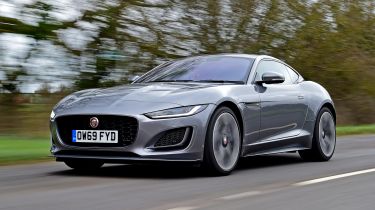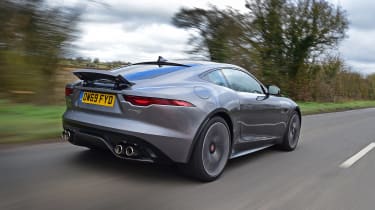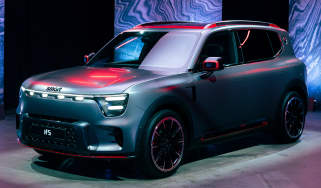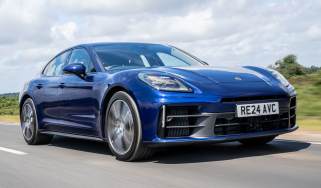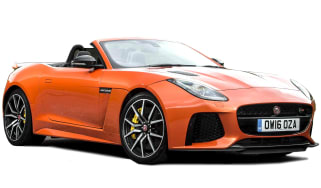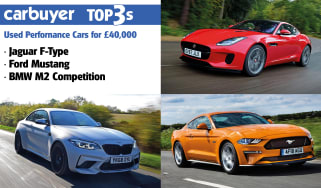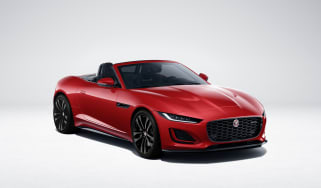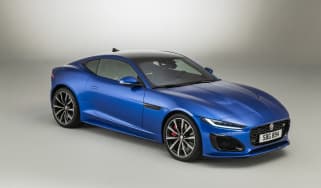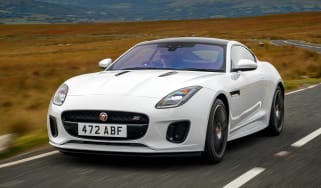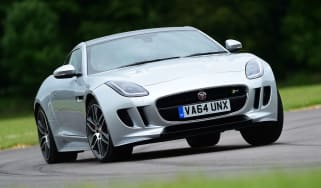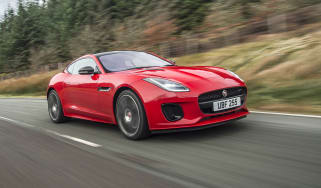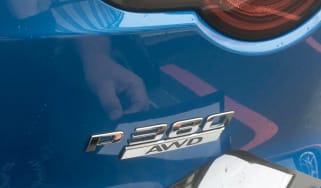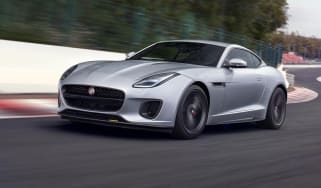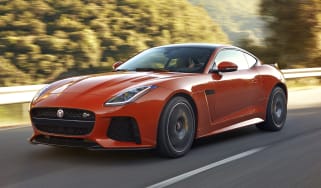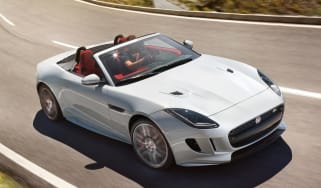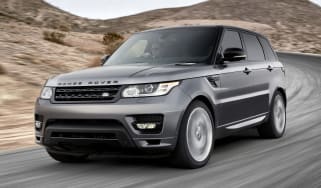Jaguar F-Type coupe review (2014-2024)
“The Jaguar F-Type offers style and performance by the bucketload, combining classic grace with modernity very well”
Pros
- Fantastic fun to drive
- Huge performance
- Handsome looks
Cons
- Expensive to run
- Pricey options list
- No manual gearbox on 2.0-litre
The Jaguar F-Type first appeared in 2013, taking the place of the Jaguar XK, the long-awaited spiritual successor to the magnificent Jaguar E-Type that was discontinued almost 50 years ago. Thankfully the F-Type didn't disappoint – it had all the style and performance that enthusiasts long for – but even after updates to the model range in the autumn of 2018, it was beginning to lag behind some of its German rivals.
 Top 10 best driver's cars 2025
Top 10 best driver's cars 2025
To bring the F-Type up to date, a revised version was launched in January 2020. It’s an 'all-new' model according to Jaguar but in truth it’s actually a very significant facelift. The updated model features thoroughly modernised, more aggressive styling, including Jaguar's latest nose design with sharper headlights, plus new arch-filling 20-inch alloy wheels.
The chassis was thoroughly reworked using some of the lessons learnt in creating the record-breaking Jaguar XE Project 8 track-focused super-saloon. The changes help the F-Type catch up with rivals in the dynamics department, giving it sharper handling and a new found agility, but it remains behind the Porsche 911. Interior technology is now more impressive thanks to a standard digital instrument display with switchable graphics and an updated 10-inch Touch Pro infotainment system.
More reviews
Mid-2017 saw the P300, a 2.0-litre, four-cylinder petrol model, added to the F-Type range – a move met by many raised eyebrows. It produces 296bhp, which is not far short of the V6 models that have now been discontinued. While many hot hatches now often boast similar power outputs and 0-62mph times for around £20,000 less, the Jaguar F-Type has them all soundly beaten for style and luxury.
The other option is a 5.0-litre V8 engine, which can be had with nearly double the power of the P300. Used elsewhere in Land Rover models for over a decade, it packs a supercharger for quicker engine response. It produces 567bhp in the range-topping four-wheel drive F-Type R P575, which is enough for a startling 3.7-second 0-62mph time. A 444bhp version was introduced in 2020, and is available with either rear- or four-wheel drive. V8-badged P450 R-Dynamic models can do 0-62mph in 4.6 seconds.
The introduction of the 2.0-litre model hugely increased the F-Type’s appeal – the previous entry-level 3.0-litre V6 looked rather expensive, but the 2.0-litre is far more competitively priced against the four-cylinder Porsche 718 Cayman and V8-powered Ford Mustang GT. At the other end of the spectrum, top versions of the F-Type still face stiff competition from the likes of the BMW 8 Series, Porsche 911 and Audi R8.
Every F-Type is a comfortable car over long distances and passengers will be grateful for the 407 litres of boot space, which makes the F-Type one of the more practical cars in its class.
The F-Type also has a very long list of optional extras, which include many things you might have expected to be given as standard. The F-Type’s trim lineup has also been streamlined for 2022, now consisting solely of the entry-level R-Dynamic model, as well as the special-edition ‘75’ and ‘75 R’.
We’re big on value here at Carbuyer and we think the base 2.0-litre R-Dynamic model is the shrewdest option available to buyers. Compared to the bigger-engined models, it’s lighter, more responsive and cheaper both to buy and run. So, like all the best sports cars, the pleasure of driving the F-Type can far outweigh the pain of paying for it.

